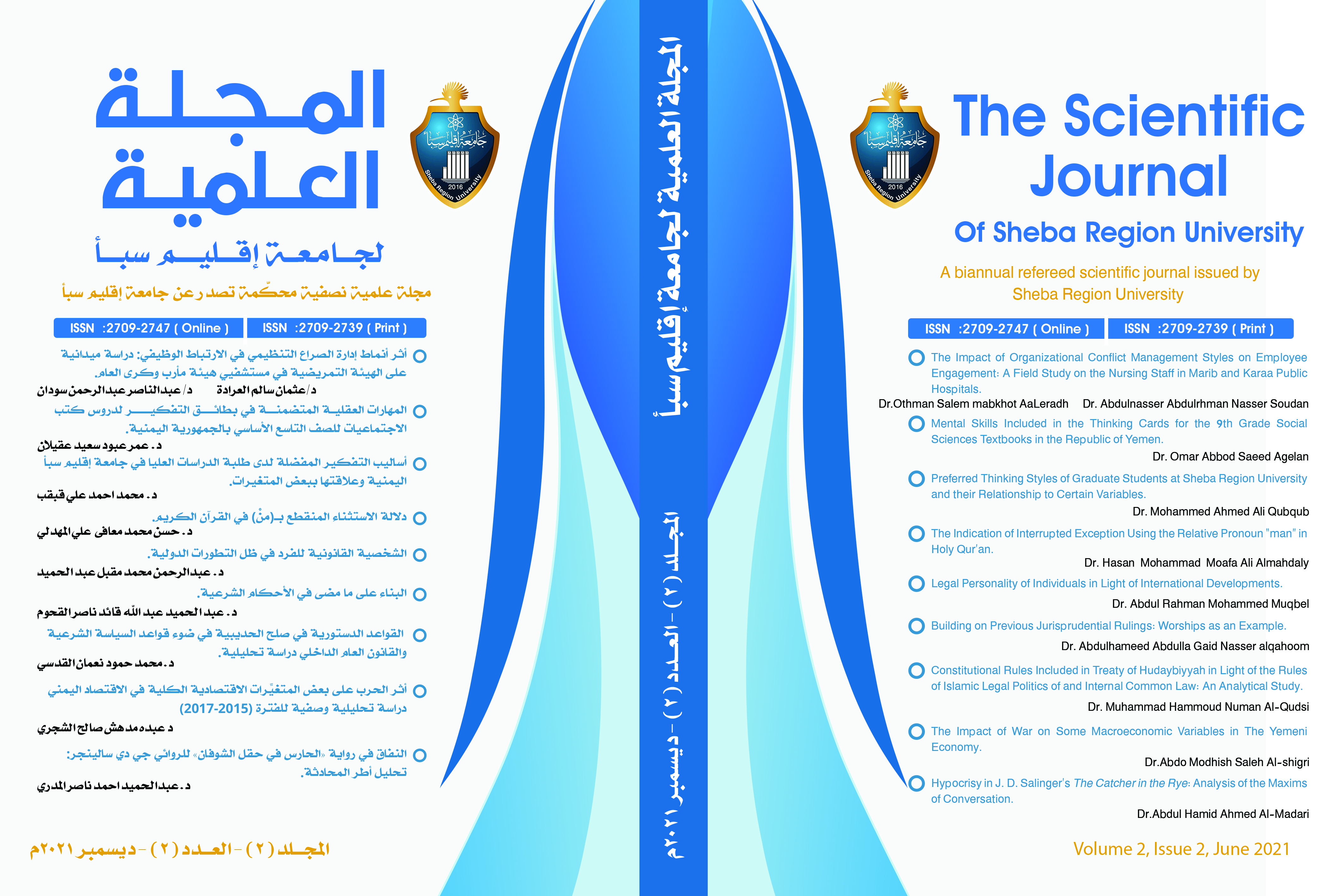البناء على ما مضى في الأحكام الشرعية «العبادات أنموذجًا»
Building on Previous Jurisprudential Rulings: Worships as an Example
DOI:
https://doi.org/10.54582/TSJ.2.2.6الكلمات المفتاحية:
البناء، الخلل، الطارئ، building، defect، emergencyالملخص
انتظمت دراسة هذا الموضوع بين التأصيل لمفهوم البناء على ما مضى من الأحكام الشرعية والتطبيق له بعدد من المسائل، بمنهج استقرائي تحليلي ليُعلَم المعنى، ويتضح المراد، ويكون لقاصد معرفة البناء في الأحكام الشرعية ما أراد، ليصل إلى أنَّ البناء لا يكون إلا عن خلل طارئ حصل أثناء العبادة الصحيحة غير المنقطعة، فيلزم من فعله الإجزاء والإبراء سواء في فعل المكلف نفسه كالصيام، أو فعل غيره كالإمامة، فتكوَّن هذا البحث من مقدمة وأربعة مباحث وخاتمة.
فالمقدمة فيها أهمية الموضوع، ومشكلته، ومنهجيته، وخطته. أما المبحث الأول: ففيه التعريفات في اللُّغة وفي الاصطلاح للبناء، والحكم، والشرعية، ثم مفهوم البناء وصورته. وأما المبحث الثاني: ففيه أسبابه البناء وشروطه، كما شمل المبحث الثالث: على البناء للخلل الطارئ في العبادة الصحيحة غير المنقطعة، بتوضيح البناء للخلل الطارئ لا الخلل الأصلي، والبناء على الصحيح من الأعمال لا الفاسد منها، وألا يكون بعد انقطاع. وأمَّا المبحث الرابع: ففيه تطبيقات لفروع وأحكام فقهية يصح فيها البناء على ما مضى، كالبناء على ما مضى في الطهارة، والأذان، والصلاة، والخطبة، والصيام، والطواف، ثم ختمت بخاتمة فيها أهم النتائج ويتبع ذلك قائمة المراجع.
This study was organized between rooting of the concept of building on the previous juridical rulings and the application of the concept in a number of issues. The researcher used the inductive-analytical approach to clarify that building on previous rulings only takes place in the case of an emergency defect occurring during uninterrupted true worship. That imposes sufficiency or exoneration, whether it is performed by the act of the person himself/herself, such as fasting, or the act of others such as being the imam. This research consisted of an introduction, four sections, and a conclusion. The introduction included the significance of the study, its problem, methodology, and plan. The first section included the definitions and terminology of building, governance, and legitimacy, Then the concept of building and its image is discussed. The second section included the reasons for building on previous juridical rulings and its conditions. The third section included building in the case of an emergency defect and not an original defect. It also included how such building is based on correct deeds and not corrupt ones, and not after a break. The fourth section included applications of jurisprudential rulings in which it was correct to build on what passed, such as building on cleanliness, Azan, prayers, Friday sermon, fasting, and Tawaf.
التنزيلات
منشور
كيفية الاقتباس
إصدار
القسم
الرخصة
حقوق النشر والترخيص
تنشر هذه المجلة جميع المواد العلمية بموجب رخصة Creative Commons Attribution 4.0 International (CC BY 4.0) ، والتي تمنحك الصلاحيات التالية:
لك مطلق الحرية في:
- المشاركة — نسخ وتوزيع ونقل العمل لأي وسط أو شكل. لأي غرض، بما في ذلك تجارياً.
- التعديل — المزج، التحويل، والإضافة على العمل. لأي غرض، بما في ذلك تجارياً.
- لا يمكن للمرخِّص إلغاء هذه الصلاحيات طالما اتبعت شروط الرخصة.
بموجب الشروط التالية:
- نَسب المُصنَّف — يجب عليك نَسب العمل لصاحبه بطريقة مناسبة ، وتوفير رابط للترخيص، وبيان إذا ما قد أُجريت أي تعديلات على العمل . يمكنك القيام بهذا بأي طريقة مناسبة، ولكن على ألا يتم ذلك بطريقة توحي بأن المؤلف أو المرخِّص مؤيد لك أو لعملك.
- منع القيود الإضافية — يجب عليك ألا تطبق أي شروط قانونية أو تدابير تكنولوجية تقيد الآخرين من ممارسة الصلاحيات التي تسمح بها الرخصة.
ملاحظات:
لا يتوجب عليك الامتثال لشروط الرخصة مع العناصر الخاضعة للملك العام في المصنف أو إذا كان استخدامك ضمن نطاق الاستثناءات أو الصلاحيات .
بدون ضمانات. قد لا توفر لك الرخصة كل الصلاحيات التي تحتاجها لغرض معين. فمثلاً، الحقوق الأخرى مثل الشهرة، الخصوصية، أو الحقوق المعنوية قد تحد من استخدامك المُصنَّف.











